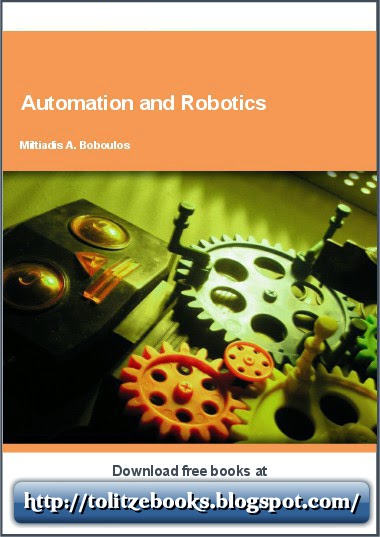Automation and Robotics
Automation and Robotics
Description
In this book for the optimisation of assembly conveyor lines we are dealing with series part production featured by a medium complexity degree and a medium number of individual components and assembly technique alternatives. Modern production techniques for medium to large series products or mass production usually involve assembly conveyor lines. The aim is to have monotonous and similar in type operations or such causing fatigue, stress and production traumas, gradually replaced by automated assembly cycles, means and techniques. Assembly alternatives involving automation, and mechanisation, programmable and adaptive control have been in addition analyzed.
Preface
In this book for the optimisation of assembly conveyor lines we are dealing with series part production featured by a medium complexity degree and a medium number of individual components and assembly technique alternatives. Modern production techniques for medium to large series products or mass production usually involve assembly conveyor lines. They still use hand labour more or less automated. The aim is to have monotonous and similar in type operations or such causing fatigue, stress and production traumas, gradually replaced by automated assembly cycles, means and techniques. This usually widely involves industrial robots and handlers. Higher productivity, lower cost and higher quality of assembled products are usually required.Recently, latest assembly techniques for simpler or more complicated products in engineering, device manufacturing and electronics involve computer-aided automated assembly means in Flexible Automated Production Lines or other types of automated conveyor lines, which provide full automation and human labour replacement. Assembly alternatives involving automation, and mechanisation, programmable and adaptive control have been analyzed in Chapters 3-5. Practically, this means no large investment in the modernisation and expansion of the production capacity and the product’s nomenclature.
Content
AbstractChapter 1: Automation & robotics: an optimized loudspeaker assembly for a mechanized serial production line
1. Introduction
2. Developing a dolly removal strategy
2.1 Loudspeaker arrangement
2.2 Operation
2.3 Description of assembly and characteristic features
2.4 Assemblies (sub-assemblies)
2.5 Involvement of the dolly in the coil assembly operation, motor unit assembly and dust cap cone
2.6 Recommendation for mechanisation of the manual operation for the Dolly removal
3. General assembly strategy
3.1 Review of assembly operations and assessment of their mechanisation suitability
3.2 Selection of an assembly unit
3.3 Stage: Assembly of motor unit – Figure 7
3.4 Recommendation for most suitable form of mechanisation and automation
4. Feeder design
4.1 Description – Figure 12
4.2 Operation
4.3 Cycle time
4.4 Storage capacity
4.5 Basic dimensions (Figure 12)
4.6 Method of re-filling
4.7 Stacker bin for feeding type 1 parts stacked and properly arranged
5. Assembly cell design
5.1 Initial provisions
5.2 Organisational arrangement of the assembly line for the current production output
5.3 Alternative organisational arrangement of the assembly line for the suggested mechanisation – NMmax = 180000/month
5.4 Analysis and assessment of the assembly cell AO24 40
References
Chapter 2: Design of speakers production: assembly line of capacity 180,000/month, 15 product variants
1. Introduction
2. Strategy for the “dolly” removal
2.1 Speaker design analysis
2.2 Design description of RSW 401, Figure 2
2.3 Analysis of the assembly operation ensuring the gap “s”
2.4 Assembly technique sequence for coil 16 and center oscillator, corrugated flat diaphragm 14 in body 1
2.5 Concept for mechanised “dolly” removal, Figure 4
2.6 Using conveyor movement for the removal of the “dolly” (Figure 4)
2.7 Possible organisation of work posts No.1 and No.2 and mounting of the “dolly” and the conveyor (Figure 5)
3. General strategy
3.1 Analysis of the assembly process techniques
3.2 Recommendation for a suitable automation process for stage A (components group A)
4. Feeder design
4.1 Description of Figure 7
4.2 Operation, Figure 7
4.3 Basic dimensions (Figure 7)
4.4 Storage capacity (Figure 7)
4.5 Cycle time Tc
4.6 Method of re-filling
4.7 Feeder of component part 10 (Figure 2) to the fixture Item No.4, Figure 7
4.8 Feeder for part No. 11 (Figure 2)
4.9 Feeder of component part 12 (Item 12 in Figure 2)
4.10 Feeder of component part 1 (item 1 in Figure 2)
5. Evaluation of the assembly unit
5.1 Structure and functioning of the assembly operation unit
5.2 Transportation of component parts and sub-assemblies, Figure 13
5.3 Arrangement layout of assembly operation units along the conveyor, Fig. 14
5.3 Production capacity of the assembly line
5.4 Investment required to achieve Q = 180000 units/month
5.5 Operation sequence using assembly robots “Fanuc” or “Pragma”
References
Chapter 3: Strategic approaches to resource husbandry and recovery: the superwash combo case study
1. Introduction
2. The team’s work
3. The performers
4. Quality
5. Market & production line
6. Environmental impact
7. Machines
8. Process technology & management
9. Raw materials & component parts
10. Conclusions
References
Chapter 4: Software engineering and data communications: an automatic laminating plant
1. Enviromental model
1.1 Context diagram [1]
1.2 Event list for press controller (pc)
2. Behavioural model
2.1 Low level data / control flow diagrams
2.2 Low level state transition diagrams
2.3 Top level data/control flow diagram [10]
References
Chapter 5: Robot grip mechanism: control loop design considerations
1. Introduction
2. Open loop system
3. Closed loop control system
4. Other control loop design considerations
5. Conlcusion
References
Show
0 Comments
prev
next












